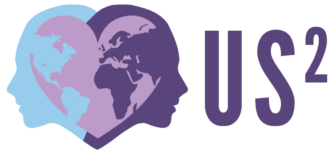Welcome to the second installment of our blog series, “Exploring Within: Self-Reflection and Cisgenderism.” In this blog, we invite you to continue your transformation of introspection. As we navigate the intricate landscape of our own beliefs, attitudes, and biases, we aim to shed light on the subtle yet pervasive force of cisgenderism that may unknowingly influence our perspectives.
The process of self-reflection is a powerful tool for understanding how our actions and thoughts align with the values of equity, inclusion, and social justice. When we confront unconscious biases, question language choices, and foster empathy, we lay the foundation for confronting cisgenderism in our own lives and beyond.
While the topic at hand requires us to take a close look at ourselves, we do so with an understanding that growth emerges from a place of discomfort, vulnerability, and willingness to change. As we navigate the various facets of self-discovery in relation to cisgenderism, let’s remember that the insights gained here will ripple into our interactions, our communities, and ultimately, the collective progress toward a more inclusive future.
Confronting Bias: Implicit Cisgenderism and Its Impact
In our quest for self-improvement and social awareness, one of the most significant challenges is addressing the biases that lie beneath the surface. Implicit biases, often lurking in the corners of our minds, can shape our perceptions and interactions without us even realizing it. When it comes to cisgenderism, these biases can play a profound role in perpetuating harmful stereotypes and attitudes.
Recognizing the Unseen

Imagine an iceberg: the tip that’s visible above the water represents our conscious thoughts and actions, while the massive portion submerged below signifies our unconscious mind. Implicit cisgenderism resides in these depths, influencing how we perceive gender and those who don’t conform to societal and cultural standards of gender identity and expression.
The Ripple Effect
Implicit cisgenderism may seem harmless, but its effects ripple throughout society. These biases contribute to a social environment where transgender and non-binary individuals are misunderstood, misrepresented, and marginalized. For example, in a workplace discussion about hiring a manager, someone expresses a preference for candidates with stereotypically “masculine” traits like assertiveness. This microinvalidation unintentionally excludes individuals who may not fit these stereotypes and invalidates any managerial experiences they may have had. Over time, cisgenderism works to limit diversity and perpetuates a system that doesn’t embrace the full range of gender identities and experiences.
The Power of Self-Awareness
Confronting implicit biases requires self-awareness and a willingness to acknowledge uncomfortable truths. In the same way that out intent doesn’t always match our impact, It’s important to remember that these biases don’t define us; rather, they offer an opportunity for growth. As we become aware of our implicit cisgenderism, we empower ourselves to unlearn harmful behaviors and perspectives. By challenging our own biases, we can pave the way for a more inclusive understanding of gender and actively disrupt the cycle of cisgenderism.
Language Matters: Challenging Cisgenderist Assumptions
Language is often referred to as a mirror reflecting our thoughts and has the power to shape our understanding of the world and the people within it. When it comes to cisgenderism, the words we choose can either reinforce societal norms or challenge them. By critically examining our language and challenging cisgenderist assumptions, we can actively contribute to a more inclusive dialogue.
Deconstructing Language
Every word we use carries a weight of meaning, and this meaning can either uphold cisgenderism or disrupt it. From pronouns to gendered terms, our language can unintentionally exclude transgender and non-binary individuals by assuming a binary understanding of gender. Keeping the impact of our words in mind more than the intent of our message will keep communication open, clear, and kind.
Validating Identities
When we consciously use inclusive language that acknowledges and respects all gender identities, we create a safe space for everyone to express themselves authentically. Using the correct pronouns and avoiding assumptions about people’s identities sends a message that their experiences are valid and valued. Choosing to use inclusive or neutral pronouns until you are aware of an individual’s identity is a powerful way to validate the experiences of gender-diverse individuals.
Language as a Catalyst for Change
The language we choose isn’t just a passive tool for communication—it’s an active agent for change. By challenging cisgenderist language assumptions, we challenge the status quo. We contribute to dismantling the restrictive framework that cisgenderism imposes and pave the way for a more inclusive world where everyone’s identity is celebrated. Remember, our words are powerful instruments for progress.
Disrupting Cisgenderism Together
Now that you’ve started to recognize cisgenderism within yourself, it’s time to look into society at large. While you’re equipped with the tools to identify cisgenderism within your thoughts and behaviors, recognizing it on a broader scale requires a different set of insights. In the next post, “Beyond Individuals: Identifying Cisgenderism in Society,” we’ll guide you through the process of recognizing the influence of cisgenderism on a societal level.
We will dive into how things like media, education, and culture have impacted how we view cisgenderism. While there has been an increase in representation through initiatives like Diversity Week in the media industry, there is still a general lack of positive representation of trans and non-binary people. If you’d like to explore the idea of media and discrimination further, jump on a call with our team! We are happy to explore our offerings that we’ve curated for Diversity Week and how they can support your organization.




